Can You Jump a Car Without a Battery
Skip to ContentSkip to Footer
How to jump start a car
Got a flat battery? This is how to jump start a car with jump leads or bump start it without them
Battery problems are one of the most common causes of car breakdowns, so there's a good chance that you'll at some point be stranded with a car that won't start. This will likely be because your car's battery has run flat, so knowing how to jump start your car and put some charge back into your battery is very handy – especially if you want to avoid a long wait for a breakdown callout.
A car battery can run out of charge for a few different reasons. For example, you can run the battery flat by leaving the radio or headlights on without the engine running, and your car may not start on a cold day as the lower temperatures will slow down the chemical reactions inside the battery cells. A battery will also over time lose its ability to hold onto its charge, so your car may refuse to start if the battery is a few years old.
Jump starting your car may look pretty simple on paper (boiled down to the basics, you're essentially just connecting one car's battery to another), but it is possible to make small mistakes with big consequences. Get it wrong, and you could cause damage to your car, and you may even risk giving yourself an electric shock. It's perhaps best to leave it to trained technicians if you're in any doubt, but our step-by-step guide below will show you how to safely jump start a car with a flat battery.
Jump start or bump start?
There are two common methods for starting a car which has a flat battery. One of these requires jump leads and another (running) car or a battery booster pack, while for the other you'll need to be able to get the car rolling to 'bump' start the engine.
Whichever way you do it, you should get your car battery checked as soon as possible after jump starting the car. If the battery was flat just because you left a light on then it should recover, but if it failed suddenly there could be an issue with the car's alternator or electrical system. It could be as simple as a dirty or corroded connection, though, so it's worth getting it checked out.
How to jump-start a car with jump leads:
1. Position the two cars:
Move another car close to the car with the flat battery (Car 1) so that the batteries are close together. In most cases, the car's battery will be in the engine bay, though some models have them mounted in the boot or even under a seat. Move all metal objects out of the way of both batteries and remove loose clothing and jewellery which could get caught in pulleys or cause a spark. Check that both batteries and your jump cables aren't damaged.
2. Connect the red jump lead:
Connect the red jump lead's crocodile clip to the positive (+) terminal on Car 2's battery, then the other end to the positive (+) terminal on Car 1's battery. Be careful not to touch the end of the clip to any other part of the car and make sure you are getting the terminal right. The positive terminal will be clearly marked and usually has a red cap.
3. Connect the black jump lead:
Connect the black jump lead's crocodile clip to the negative (-) terminal of Car 2's battery, then the other end to an earthing point on Car 1 – this is usually found at the end of the negative lead and is bolted to a solid part of the chassis.
4. Start the engine:
Start Car 2's engine. Wait about 5 minutes and then start Car 1. If the battery isn't totally dead and the car turns over slowly, you may be able to do this straight away. When the car is started, remove the clips in reverse order to the above.
5. Run or drive the car:
Run or, preferably, drive Car 1 for at least 15 minutes to let the battery recharge so that it can start on its own. Don't keep trying to start it though, or you will flatten the battery again.
Some models have inaccessible batteries and will usually have special terminals somewhere under the bonnet for jump starting – check the owner's manual if this is the case.
Without cables – the bump start (only works for manual cars)
- If you are parked facing downhill, you won't need a push. But otherwise you'll need to gather some volunteers to help push your car.
- Push in the clutch (do not release until step 4) and put the car into second gear. Turn on the ignition.
- Have your friends start pushing the car, or let off the brakes if you're on a hill.
- Once you're moving at a fast walking pace, bring up the clutch quickly and the engine will start. Once it does, push the clutch pedal again and let the engine idle. Let the car run while it recharges.
Jump starting a car with jump leads: explained in detail
1. Safety always comes first when dealing with electricity. Make sure that there are no metal objects nearby, like tools or even jewellery, that could come into contact with the batteries or cables - and take off any clothing that could get caught inside the engine bay.
You should also make sure that the batteries of both cars aren't damaged. If a battery's plastic casing is broken or it looks like it is leaking, don't try anything - either remove it yourself, if you know what you're doing, or take it to a professional to be replaced. Likewise, if the cables are damaged it may be best to borrow someone else's or buy some new ones - they're not too expensive.
2. After you've moved two cars close together so that the leads will reach between the batteries, it's time to connect the leads. Make sure both cars are completely off with the keys out and place a clip on the red jump cable onto the positive terminal - marked with a plus (+) symbol - on the battery of the car that works (we'll call this Car 2).
Clip the other end of the red cable to the positive (+) terminal on the non-starting car (Car 1). Make sure both clips are on securely and will not snap off. You should also make sure the cables don't fall into the engine bay and obstruct any moving parts.
3. Connect one end of the black jump lead to the negative terminal - marked with a minus (-) symbol - on Car 2's battery.
The other end of the black cable should be attached to an earthing point on Car 1 - some cars have a dedicated point, but otherwise use any bit of solid metal attached to the engine block or chassis, like an unpainted bolt. This should be away from the battery and any fuel-related parts. A small spark as you connect it is nothing to worry about.
4. Now start Car 2 and let the engine run for a little while. After about 5 minutes you should be able to start Car 1. If it doesn't start, then turn Car 2 off, gently adjust the clamps to ensure a good connection and then try again. If this doesn't work you may need a new battery or other essential parts to be repaired.
Once Car 1 is running, the clips can be removed. Make sure you don't touch any electrical components and only handle the insulated parts of the jump leads. Remove the leads in the opposite order to before: Earthed end of black lead, then the black clip on Car 2, then the red clip on Car 1, and finally the red clip on Car 2.
5. You will need to drive Car 1 or keep it running for at least 15 minutes to charge the battery up, but once it is running normally it can be driven as normal - just don't turn it off before the 15 minutes are up or you risk having to repeat the whole process!
How to bump-start a car without jump leads: detailed push start guide
1. Before you try push starting a car, you need to make sure it's a manual car with a clutch. Automatics or cars with no clutch can't be bump started.
You'll also need a group of friends to help you get the car moving. If you can't find any nearby, try asking some passers-by to help - they may even become your friends in the future, which would be a nice side-effect of having a flat battery. You could also be towed by another vehicle or, if you're on a hill and you can get the car moving without any help, you'll be able to start the car on your own.
2. Push in the clutch, and keep it depressed fully until step 4 (below). Put the car into second gear and turn the key so that the ignition light comes on.
3. Get your friends to start pushing the car, making sure that there is no traffic coming as you would when pulling off normally. If you're on a hill, let the brakes off so that you start moving.
4. Once you're on the move, at about 5mph, release the clutch quickly so that the engine and gearbox connect. The wheels will turn the gears and then the engine, starting the combustion cycle is the same way as your starter motor.
Come to a stop, leaving the engine running, and thank your companions for doing the legwork. Make sure you run the engine for at least 15 minutes to charge the battery before turning it off. You can use this time to make your friends a cup of tea, or simply drive away.
How to jump start a car with a portable power pack
Portable power packs are a way of starting a car without the extra effort of finding another car or a group of volunteers. These devices carry enough charge to jump start your car simply by attaching the built-in crocodile clips to your battery's positive terminal and to an earthing point - exactly like the steps for jump starting using another car (above). All you have to do then is turn the car on and remove the power pack, then leave the engine running to recharge the battery.
They tend to be quite a bit more expensive than jump leads, though power packs are a wise investment if you don't use your car very often or have a habit of leaving the lights on! They may also save you the bother of connecting up your car if another driver needs a jump start.
Check out our best mini jump starter packs here...
- • Best winter tyres
- • Winter driving tips
- • Winter car checklist & best buys
- • Hot new 4x4 cars coming soon
- • Fact or fiction? 10 winter driving myths busted
- • Best SUVs and 4x4s to buy now
- • Best small 4x4s to buy now
- • The world's coldest roads
Recommended
Best snow foam lances 2021
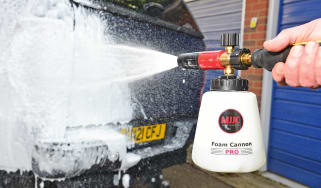
Car care
Best snow foam lances 2021
We find the best way to spray on muck-shifting foam
22 Nov 2021
Car service intervals explained: how often should you service your car?
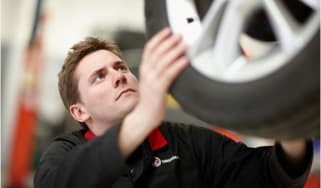
Owning a car
Car service intervals explained: how often should you service your car?
Whether your car is petrol, diesel, hybrid or electric powered, it's going to need a service. Here's a quick guide to car servicing and service interv…
17 Nov 2021
Best ceramic sealants

Car care
Best ceramic sealants
Protect your paintwork with the best ceramic sealants
11 Nov 2021
Best battery chargers
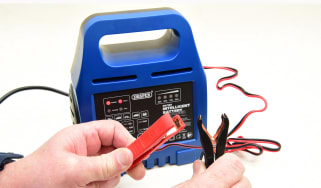
Product group tests
Best battery chargers
Which car battery charger is best for you? We test a number of popular options to find out
11 Nov 2021
Most Popular
New BMW Concept XM previews sporty XM production car due in 2022

BMW
New BMW Concept XM previews sporty XM production car due in 2022
The new BMW Concept XM hints at a sporty V8 plug-in hybrid production SUV
30 Nov 2021
UK petrol and diesel prices: petrol stations urged to make price cuts
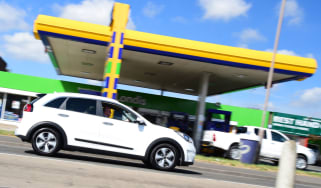
News
UK petrol and diesel prices: petrol stations urged to make price cuts
Retailers are pocketing bigger margins on petrol and diesel, instead of passing on the 12p per litre oil price cut
30 Nov 2021
Next-gen Volkswagens to get smarter and more comfortable
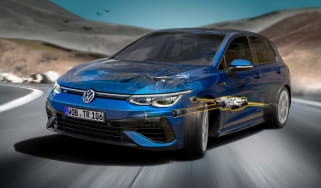
Volkswagen
Next-gen Volkswagens to get smarter and more comfortable
Volkswagen is working on a host of new technology, including fly-by-wire steering, a driver-facing interior camera and an intelligent chassis
30 Nov 2021
Skip to HeaderSkip to Content
Can You Jump a Car Without a Battery
Source: https://www.autoexpress.co.uk/accessories-tyres/winter-special/89304/how-to-jump-start-your-car